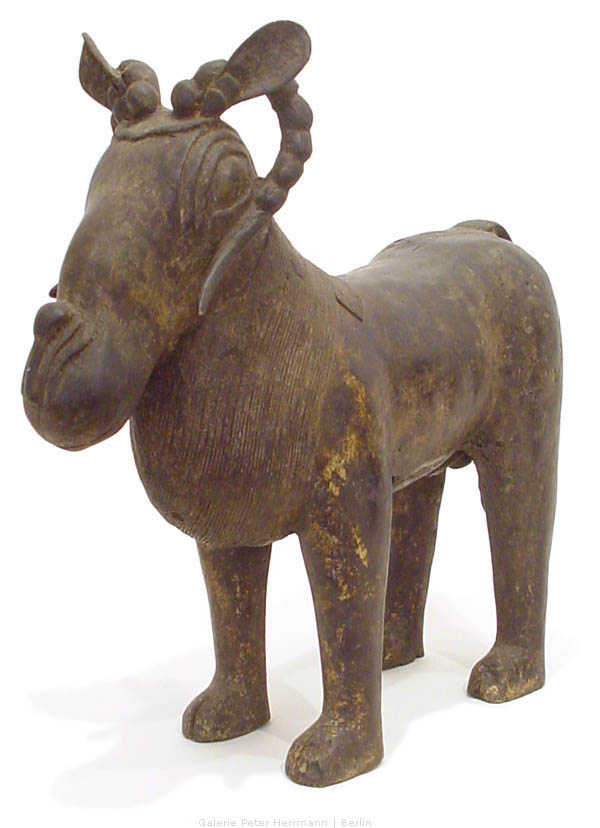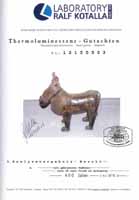Galerie Peter Herrmann |
- | Ancient Art from Africa |
||
|
| Thermoluminescence - Expertise | Ram
Benin, Nigeria |
| Ram: |
| A very similar ram can be found in the British Museum in London, though that object is an aquamanile - that is, a ewer. Bronze objects like rams and leopards were often used as ewers for ceremonial ablutions. Though this ram is very similar to the one in London, it lacks the openings on the head and nostrils typical for an aquamanile, and was thus probably created as a symbol of royal power for the altar of a king. In Benin, the ram stands for masculinity and perseverance and was traditionally sacrificed at the Ague Ceremony, inaugurated by Oba Esigie (-1550) as part of an important festival. The naturalistic depiction and lack of symbolic overload of this ram seems to confirm its old age, as determined by TL analysis. Cp.: |
| Objects of Comparison: | Illustration |
| British Museum, London | William B. FAGG: Bildwerke aus Nigeria, München 1963, S. 75. |
|
W./ B. FORMAN, Philip DARK: Die Kunst von Benin, Prag 1960, Abb. 87.
|
| The National Commission for Museums and Monuments, Nigeria | Barbara PLANKENSTEINER (Hg.): Benin. Könige und Rituale. Höfische Kunst aus Nigeria, Wien 2007, S. 433. |

